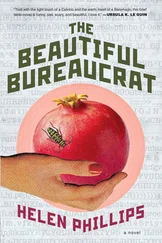Babur - The Bābur-nāma
Здесь есть возможность читать онлайн «Babur - The Bābur-nāma» — ознакомительный отрывок электронной книги совершенно бесплатно, а после прочтения отрывка купить полную версию. В некоторых случаях можно слушать аудио, скачать через торрент в формате fb2 и присутствует краткое содержание. Жанр: foreign_antique, foreign_prose, на английском языке. Описание произведения, (предисловие) а так же отзывы посетителей доступны на портале библиотеки ЛибКат.
- Название:The Bābur-nāma
- Автор:
- Жанр:
- Год:неизвестен
- ISBN:нет данных
- Рейтинг книги:4 / 5. Голосов: 1
-
Избранное:Добавить в избранное
- Отзывы:
-
Ваша оценка:
- 80
- 1
- 2
- 3
- 4
- 5
The Bābur-nāma: краткое содержание, описание и аннотация
Предлагаем к чтению аннотацию, описание, краткое содержание или предисловие (зависит от того, что написал сам автор книги «The Bābur-nāma»). Если вы не нашли необходимую информацию о книге — напишите в комментариях, мы постараемся отыскать её.
The Bābur-nāma — читать онлайн ознакомительный отрывок
Ниже представлен текст книги, разбитый по страницам. Система сохранения места последней прочитанной страницы, позволяет с удобством читать онлайн бесплатно книгу «The Bābur-nāma», без необходимости каждый раз заново искать на чём Вы остановились. Поставьте закладку, и сможете в любой момент перейти на страницу, на которой закончили чтение.
Интервал:
Закладка:
715
It will be observed that Bābur limits the name Afghānistān to the countries inhabited by Afghān tribesmen; they are chiefly those south of the road from Kābul to Pashāwar (Erskine). See Vigne, p. 102, for a boundary between the Afghāns and Khurāsān.
716
Al-birūnī’s Indika writes of both Turk and Hindū-shāhī Kings of Kābul. See Raverty’s Notes p. 62 and Stein’s Shāhī Kings of Kābul . The mountain is 7592 ft. above the sea, some 1800 ft. therefore above the town.
717
The Kābul-river enters the Chār-dih plain by the Dih-i-yaq‘ūb narrows, and leaves it by those of Dūrrīn. Cf. S.A. War , Plan p. 288 and Plan of action at Chār-āsiyā (Four-mills), the second shewing an off-take which may be Wais Ātāka’s canal. See Vigne, p. 163 and Raverty’s Notes pp. 69 and 689.
718
This, the Bālā-jūī (upper-canal) was a four-mill stream and in Masson’s time, as now, supplied water to the gardens round Bābur’s tomb. Masson found in Kābul honoured descendants of Wais Ātāka (ii, 240).
719
But for a, perhaps negligible, shortening of its first vowel, this form of the name would describe the normal end of an irrigation canal, a little pool, but other forms with other meanings are open to choice, e. g. small hamlet (Pers. kul ), or some compound containing Pers. gul , a rose, in its plain or metaphorical senses. Jarrett’s Āyīn-i-akbarī writes Gul-kīnah, little rose (?). Masson (ii, 236) mentions a similar pleasure-resort, Sanjī-tāq.
720
The original ode, with which the parody agrees in rhyme and refrain, is in the Dīwān, s.l. Dāl (Brockhaus ed. 1854, i, 62 and lith. ed. p. 96). See Wilberforce Clarke’s literal translation i, 286 (H. B.). A marginal note to the Ḥaidarābād Codex gives what appears to be a variant of one of the rhymes of the parody.
721
aūlūgh kūl ; some 3 m. round in Erskine’s time; mapped as a swamp in S.A. War p. 288.
722
A marginal note to the Ḥai. Codex explains this name to be an abbreviation of Khwāja Shamsū’d-dīn Jān-bāz (or Jahān-bāz ; Masson, ii, 279 and iii, 93).
723
i. e . the place made holy by an impress of saintly foot-steps.
724
Two eagles or, Two poles, used for punishment. Vigne’s illustration (p. 161) clearly shows the spur and the detached rock. Erskine (p. 137 n.) says that ‘Uqābain seems to be the hill, known in his day as ‘Āshiqān-i-‘ārifān, which connects with Bābur Bādshāh. See Raverty’s Notes p. 68.
725
During most of the year this wind rushes through the Hindū-kush (Parwān) – pass; it checks the migration of the birds (f. 142), and it may be the cause of the deposit of the Running-sands (Burnes, p. 158). Cf. Wood, p. 124.
726
He was Badī‘u’z-zamān’s Ṣadr before serving Bābur; he died in 918 AH. (1512 AD.), in the battle of Kūl-i-malik where ‘Ubaidu’l-lāh Aūzbeg defeated Bābur. He may be identical with Mīr Ḥusain the Riddler of f. 181, but seems not to be Mullā Muḥ. Badakhshī , also a Riddler, because the Ḥabību’s-siyār (ii, 343 and 344) gives this man a separate notice. Those interested in enigmas can find one made by T̤ālib on the name Yaḥya (Ḥ.S. ii, 344). Sharafu’d-dīn ‘Alī Yazdī , the author of the Z̤afar-nāma , wrote a book about a novel kind of these puzzles (T.R. p. 84).
727
The original couplet is as follows: —
Bakhūr dar arg-i Kābul mai, bagardān kāsa pāy dar pāy,
Kah ham koh ast, u ham daryā, u ham shahr ast, u ham ṣaḥrā'.
What T̤ālib’s words may be inferred to conceal is the opinion that like Badī‘u’z-zamān and like the meaning of his name, Kābul is the Wonder-of-the-world. (Cf. M. Garçin de Tassy’s Rhét orique [p. 165], for ces combinaisons énigmatiques .)
728
All MSS. do not mention Kāshghar.
729
Khīta (Cathay) is Northern China; Chīn ( infra ) is China; Rūm is Turkey and particularly the provinces near Trebizond (Erskine).
730
300 % to 400 % (Erskine).
731
Persian sinjid , Brandis, elæagnus hortensis ; Erskine (Mems. p. 138) jujube, presumably the zizyphus jujuba of Speede, Supplement p. 86. Turkī yāngāq , walnut, has several variants, of which the most marked is yānghkāq . For a good account of Kābul fruits see Masson, ii, 230.
732
a kind of plum (?). It seems unlikely to be a cherry since Bābur does not mention cherries as good in his old dominions, and Firminger (p. 244) makes against it as introduced from India. Steingass explains alū-bālū by “sour-cherry, an armarylla”; if sour, is it the Morello cherry?
733
The sugar-cane was seen in abundance in Lan-po (Lamghān) by a Chinese pilgrim (Beale, p. 90); Bābur’s introduction of it may have been into his own garden only in Nīngnahār (f. 132b).
734
i. e. the seeds of pinus Gerardiana .
735
rawāshlār. The green leaf-stalks ( chūkrī ) of ribes rheum are taken into Kābul in mid-April from the Pamghān-hills; a week later they are followed by the blanched and tended rawāsh (Masson, ii, 7). See Gul-badan’s H.N. trs. p. 188, Vigne, p. 100 and 107, Masson, ii, 230, Conolly, i, 213.
736
a large green fruit, shaped something like a citron; also a large sort of cucumber (Erskine).
737
The ṣāḥibī , a grape praised by Bābur amongst Samarkandī fruits, grows in Koh-dāman; another well-known grape of Kābul is the long stoneless ḥusainī , brought by Afghān traders into Hindūstān in round, flat boxes of poplar wood (Vigne, p. 172).
738
An allusion, presumably, to the renouncement of wine made by Bābur and some of his followers in 933 AH. (1527 AD. f. 312). He may have had ‘Umar Khayyām’s quatrain in mind, “Wine’s power is known to wine-bibbers alone” (Whinfield’s 2nd ed. 1901, No. 164).
739
pūstīn , usually of sheep-skin. For the wide range of temperature at Kābul in 24 hours, see Ency. Brtt. art. Afghānistān. The winters also vary much in severity (Burnes, p. 273).
740
Index s. n. As he fought at Kānwāha, he will have been buried after March 1527 AD.; this entry therefore will have been made later. The Curriers'-gate is the later Lahor-gate (Masson, ii, 259).
741
Index s. n.
742
For lists of the Hindū-kush passes see Leech’s Report VII; Yule’s Introductory Essay to Wood’s Journey 2nd ed.; PRGS 1879, Markham’s art. p. 121.
The highest cols on the passes here enumerated by Bābur are, – Khawāk 11,640 ft. – T̤ūl, height not known, – Pārandī 15,984 ft. – Bāj-gāh (Toll-place) 12,000 ft. – Walīān (Saints) 15,100 ft. – Chahār-dār (Four-doors) 18,900 ft. and Shibr-tū 9800 ft. In considering the labour of their ascent and descent, the general high level, north and south of them, should be borne in mind; e. g. Chārikār (Chār-yak-kār) stands 5200 ft. and Kābul itself at 5780 ft. above the sea.
Читать дальшеИнтервал:
Закладка:
Похожие книги на «The Bābur-nāma»
Представляем Вашему вниманию похожие книги на «The Bābur-nāma» списком для выбора. Мы отобрали схожую по названию и смыслу литературу в надежде предоставить читателям больше вариантов отыскать новые, интересные, ещё непрочитанные произведения.
Обсуждение, отзывы о книге «The Bābur-nāma» и просто собственные мнения читателей. Оставьте ваши комментарии, напишите, что Вы думаете о произведении, его смысле или главных героях. Укажите что конкретно понравилось, а что нет, и почему Вы так считаете.











